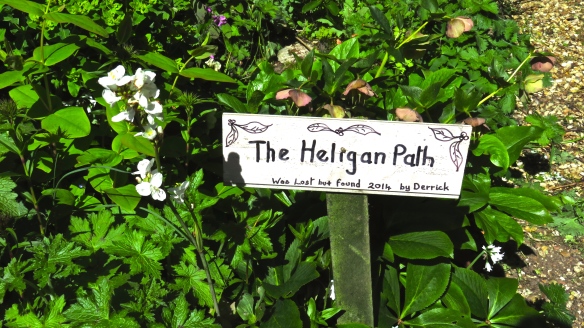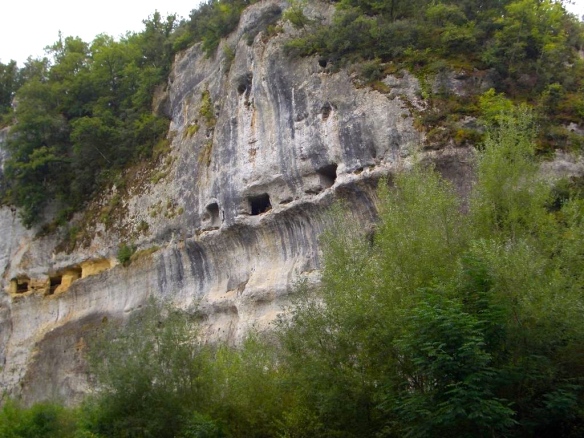On a warm, sunny, morning, Jackie drove me to Lymington hospital for a physiotherapy appointment. This had been rescheduled because I forgot the first one. Apparently, although it still looks pretty manky, and required the physiotherapist to cut away scabs clinging to the parchment of dead skin, my hand is healing well. I’ll spare you the photographic evidence. Later, I walked around the garden where 
a minute spider clung to one of the many different cranesbill geraniums;

a glechoma has produced tiny flowers which neither of us has ever seen before;

a rich carmine lonicera adorns the arch leading into the planned rose garden;

and ornamental grasses cast their shadows across pale lilac aquilegias.
I needed to climb onto the Ace Reclaim bench to photograph this unidentified clematis,

because it is so close to the fence that it is our neighbours who are getting the benefit of it. 
Jackie had no difficulty in identifying the marvellous magenta Dr Ruppel variety ascending the weeping birch, because she had planted it beneath that tree.

I thought it rather generous of her to have added a dedication to The Heligan Path sign.
As you approach the entrance to Lymington hospital you are currently greeted by a sparrow concerto of splendid amplification. This comes from a colony inhabiting the walls. The architects have provided a facade of stone chunks without apparent grouting. A strong metal grid covers this, presumably to prevent an avalanche. These, the head gardener tells me are cages called gabions.
The birds flit backwards and forwards to and from the crevices behind which they are nesting.
This one appears to be carrying food for chicks.

Various males stand guard outside their respective entrances.

You wouldn’t want to tangle with this one. (Click on him to reveal his malevolent visage).
The house sparrow is an Old World sparrow believed to have evolved in the Mediterranean region centuries ago. It is unlikely to date as far back as the times of the Neanderthal or Cro-Magnon humans. The latter term for our ancestors comes from the name of a hill in the village of Les Eyzies de Tayac in the Dordogne in Southern France, within reasonable driving distance of my house in Sigoules. This was where bones were discovered by workmen in 1868. These people were also cave dwellers, and lived on this hillside:

One former resident, surveying the valley below, has been preserved in stone.
Perhaps far more famous are the caves at Lescaux where early folk have left their marks on the walls. Chris and Frances were rather disappointed a few years ago when they took a trip from Sigoules to see them. In order to preserve the artwork intact, the public are not permitted to enter the original dwellings, and are shown around a replica, at the speed with which anyone who has been marshalled along a crowded art gallery will be familiar. Here is a two and a half minutes guided tour taken from YouTube:
[youtube https://www.youtube.com/watch?v=2hiFqqqjTxQ&w=560&h=315] There was no YouTube in prehistoric times, so people told their stories in scratched markings and pigmentation.  In Argentina’s Patagonia stencils of human hands, together with other rock paintings depicting the life of hunters who lived between 13,000 and 9,500 years ago, cover the walls of the cave known as the “Cueva de las Manos” which literally means, “the Cave of Hands”. Perhaps these people didn’t live long enough to be inflicted with Dupuytren’s contracture.
In Argentina’s Patagonia stencils of human hands, together with other rock paintings depicting the life of hunters who lived between 13,000 and 9,500 years ago, cover the walls of the cave known as the “Cueva de las Manos” which literally means, “the Cave of Hands”. Perhaps these people didn’t live long enough to be inflicted with Dupuytren’s contracture.
This evening we dined on a tangy variation of Jackie’s cottage pie topped with sheets of mature cheddar cheese; baked carrots and leaks; stir fried cabbage, onions, and peppers; and piquant cauliflower cheese. This was followed by Lidl’s Deluxe New York cheesecake, use by 18 May. Jackie drank her habitual Hoegaarden and I relished my customary red wine, in this case the last of the Cotes du Rhone Villages.





























